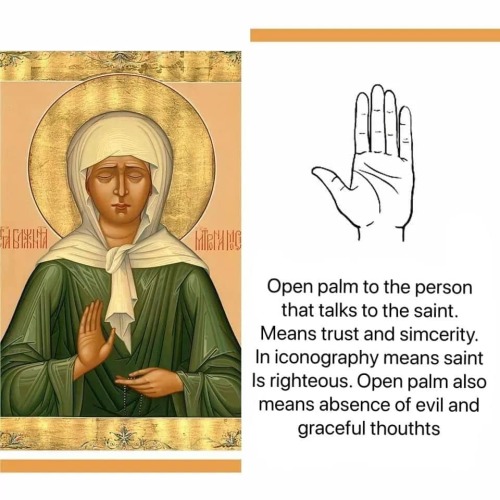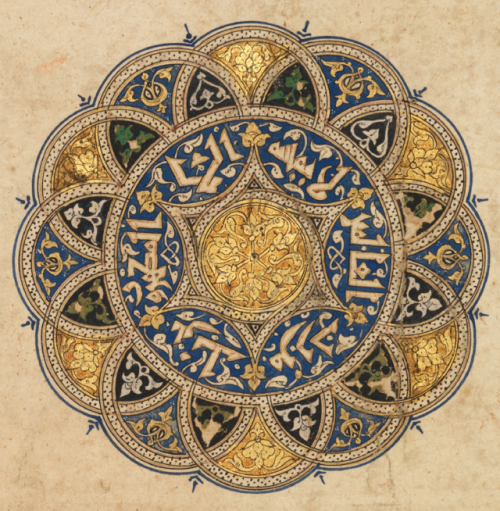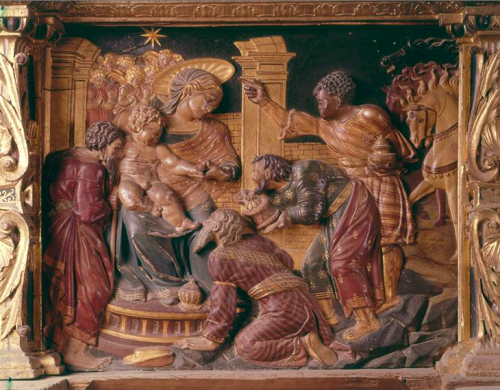Back In The Day Medieval Times Was So Big It Covered All Of Europe. Now Its So Small It Fits In Some
back in the day medieval times was so big it covered all of europe. now its so small it fits in some restaurants
More Posts from Babel2001 and Others









Hand gestures and their meaning in iconography and religious paintings.
[showing a medieval peasant radioactive by imagine dragons] so we have devices that can record sounds and music as if it were words upon a page
peasant: can we listen to something else
me [lying maliciously]: this is the only song we have.
hi I'm from your pseudo-medieval fantasy city. yeah. you forgot to put farms around us. we have very impressive walls and stuff but everyone here is starving. the hero showed up here as part of his quest and we killed and ate him
medieval peasant: I see... so, it is the case that there are many paintings within this magical book? it is not so strange after all.
me, trying to show him tumblr to scare him: I was kind of hoping this would be a bit more confusing to you
peasant, suddenly pointing at the screen: hark! cynocephali
it's funny although a little exasperating how artists designing "princess" or medieval-esque gowns really do not understand how those types of clothes are constructed. We're all so used to modern day garments that are like... all sewn together in one layer of cloth, nobody seems to realize all of the bits and pieces were actually attached in layers.
So like look at this mid-1400's fit:


to get the effect of that orange gown, you've got
chemise next to the skin like a slip (not visible here) (sometimes you let a bit of this show at the neckline) (the point is not to sweat into your nice clothes and ruin them)
kirtle, or undergown. (your basic dress, acceptable to be seen by other people) this is the puffing bits visible at the elbow, cleavage, and slashed sleeve. It's a whole ass dress in there. Square neckline usually. In the left picture it's probably the mustard yellow layer on the standing figure.
coat, or gown. This is the orange diamond pattern part. It's also the bit of darker color visible in the V of the neckline.
surcoat, or sleeveless overgown. THIS is the yellow tapestry print. In the left picture it's the long printed blue dress on the standing figure
if you want to get really fancy you can add basically a kerchief or netting over the bare neck/shoulders. It can be tucked into the neckline or it can sit on top. That's called a partlet.
the best I can tell you is that they were technically in a mini-ice-age during this era. Still looks hot as balls though.
Coats and surcoats are really more for rich people though, normal folks will be wearing this look:

tbh I have a trapeze dress from target that looks exactly like that pale blue one. ye olden t-shirt dress.
so now look here:

(this is a princess btw) both pieces are made of the same blue material so it looks as if it's all one dress, but it's not. The sleeves you're seeing are part of the gown/coat, and the ermine fur lined section on top is a sideless overgown/surcoat. You can tell she's rich as fuck because she's got MORE of that fur on the inside of the surcoat hem.
okay so now look at these guys.


Left image (that's Mary Magdelene by the way) you can see the white bottom layer peeking out at the neckline. That's a white chemise (you know, underwear). The black cloth you see behind her chest lacing is a triangular panel pinned there to Look Cool tm. We can call that bit the stomacher. Over the white underwear is the kirtle (undergown) in red patterned velvet, and over the kirtle is a gown in black. Right image is the same basic idea--you can see the base kirtle layer with a red gown laced over it. She may or may not have a stomacher behind her lacing, but I'm guessing not.
I've kind of lost the plot now and I'm just showing you images, sorry. IN CONCLUSION:

you can tell she's a queen because she's got bits I don't even know the NAMES of in this thing. Is that white bit a vest? Is she wearing a vest OVER her sideless surcoat? Girl you do not need this many layers!


Sancte Michael Memento Mei Ante Deum
Horae ad usum Trecensem dites Heures de Michel Berthier, 1415-1420

Shamsa, 1338
Shamsa means ‘sun’ in Arabic and it is the term used to refer to illuminated roundels
Collection: Trustees of the Chester Beatty Library, Dublin


Juan de Balmaseda
Carved Predella: Adoration of the Magi
Spain (c. 1516-1525)
Polychrome Wood, 68 x 83 cm.
Palencia, Seo. Capilla de San Ildefonso.
The Image of the Black in Western Art Research Project and Photo Archive, W.E.B. Du Bois Institute for African and African American Research, Harvard University
In the sixteenth century and for a long time afterwards, in short, the Middle Ages was never simply a chronological concept, never simply a past time firmly fixed in the past. It was an ideological state of being, a state of historical development that might return and in fact could be re-entered much more easily than it could be left behind. Sermons of the period repeatedly warn against precisely this possibility: John Jewel, bishop of Salisbury under Elizabeth, was one who preached vigilance against Catholics who might bring back darkness, concerned that those who “rauine and spoyle the house of God” and by means of whom “forraine power, of which this realme by the mercie of God is happely delyuered, shall agayne be brought in vpon vs,” and warning that “Suche thinges shalbe done vnto vs, as we before suffered: the truth of God shalbe taken away, the holy scriptures burnt and consumed in fire.” The overall mode here might be an admonitory subjunctive, but the simple future tenses rhetorically propose something that will happen.
Later, when interest in the medieval period was revived in the second half of the eighteenth century, the original threat of a Middle Ages that might return had greatly diminished. In the eighteenth century, as Linda Colley has argued, Great Britain was consolidating itself as a protestant nation and a British Empire was being founded in the 1760s on the gains made in the Seven Years War. If Britain still demonised Catholicism, it nevertheless did so without quite the same sense, as in Elizabethan England, that Catholicism was always set to pounce on an unwary nation. It was then possible for such ministers of the Church of England as Thomas Percy to revive interest in the Middle Ages without provoking fears of an immediate lapse into Catholic superstition. It was possible for people to construct around themselves renewed medieval spaces – as Horace Walpole did with his house at Strawberry Hill – without threatening the immediate return of the medieval repressed. Hence the foundations were laid for a more scholarly approach to the Middle Ages in the 1760s, the period known as the Medieval or Romantic revival.
The initial impulses of the revival grew out of antiquarianism. In the eighteenth century all kinds of antiquities became the focus of interest – neolithic and Iron Age remains, coins, ballads and early poetry, folklore – as part of a general turn to the primitive. There was then a discovery of the past, in some cases quite literally a dis-covering as artefacts were unearthed, manuscripts retrieved, old tombs broken open. Out of disparate antiquarian impulses arose, in the medievalist sphere, such classic works as Richard Hurd’s Letters on Chivalry and Romance (1762); Thomas Percy’s ballad collection, The Reliques of Ancient English Poetry (1765); Horace Walpole’s novel, The Castle of Otranto (1764), Thomas Tyrwhitt’s edition of Chaucer’s Canterbury Tales (1775), and the three-volume scholarly work by Thomas Warton, History of English Poetry (1774–81).
[...]
Even as artefacts were dug out of the ground, oral ballads transcribed, and manuscripts retrieved from oblivion, the condition of this so-called revival was that nothing would actually come back to life. The Medieval Revival, by transforming the Middle Ages into a new object of study, in fact revived nothing, but rather secured the period as part of the dead past. This was History. At least implicit in this antiquarianism was the underlying eighteenth-century sense of historical progress; nothing had ever reached such a state of improvement as it now enjoyed. Correspondingly, there was little threat that the past might return. Medieval studies, which grew out of the amateur efforts of Percy, Scott, and others, would eventually deliver the Middle Ages as a historical period, fixed in the past.
And yet, acceptable as an interest in the Middle Ages became in the course of the nineteenth century, a strange temporality, as I want to show here, has persisted in all eras in ideas of the Middle Ages. “Historical linearity,” Bettina Bildhauer and Anke Bernau write, “quickly proves an unsatisfactory model when seeking to understand contemporary investments in the medieval past.” And while they refer specifically to films about the Middle Ages, the remark is more generally true. We might think of the vision of a discontinuous history that results as a queer one. Carolyn Dinshaw, thinking in particular of mystical experience and Margery Kempe, writes: “in my view a history that reckons in the most expansive way possible with how people exist in time, with what it feels like to be a body in time, or in multiple times, or out of time, is a queer history – whatever else it might be.”
Matthews, David. “‘Welcome to the Current Middle Ages’: Asynchronous Medievalism.” In Medievalism: A Critical History. http://www.jstor.org/stable/10.7722/j.ctt6wpbdd.9
-
 aceclipse reblogged this · 4 months ago
aceclipse reblogged this · 4 months ago -
 kashiichan liked this · 4 months ago
kashiichan liked this · 4 months ago -
 mindmistspren reblogged this · 4 months ago
mindmistspren reblogged this · 4 months ago -
 carolinanadeau reblogged this · 5 months ago
carolinanadeau reblogged this · 5 months ago -
 breakdown-voltage reblogged this · 5 months ago
breakdown-voltage reblogged this · 5 months ago -
 breakdown-voltage liked this · 5 months ago
breakdown-voltage liked this · 5 months ago -
 himblebo reblogged this · 5 months ago
himblebo reblogged this · 5 months ago -
 mooshymoomoo liked this · 5 months ago
mooshymoomoo liked this · 5 months ago -
 illuminetic liked this · 5 months ago
illuminetic liked this · 5 months ago -
 maureen-doolittle reblogged this · 5 months ago
maureen-doolittle reblogged this · 5 months ago -
 infantisimo liked this · 5 months ago
infantisimo liked this · 5 months ago -
 snake-eggs reblogged this · 5 months ago
snake-eggs reblogged this · 5 months ago -
 snake-eggs liked this · 5 months ago
snake-eggs liked this · 5 months ago -
 theglasscat reblogged this · 5 months ago
theglasscat reblogged this · 5 months ago -
 spaceuber reblogged this · 5 months ago
spaceuber reblogged this · 5 months ago -
 thepissyprincess07 liked this · 5 months ago
thepissyprincess07 liked this · 5 months ago -
 90stvqueen liked this · 5 months ago
90stvqueen liked this · 5 months ago -
 pinkgreenyuri liked this · 5 months ago
pinkgreenyuri liked this · 5 months ago -
 eve-will-perceive reblogged this · 5 months ago
eve-will-perceive reblogged this · 5 months ago -
 eve-will-perceive liked this · 5 months ago
eve-will-perceive liked this · 5 months ago -
 ussdiscowhale liked this · 5 months ago
ussdiscowhale liked this · 5 months ago -
 gaybd1 liked this · 5 months ago
gaybd1 liked this · 5 months ago -
 carolinanadeau liked this · 5 months ago
carolinanadeau liked this · 5 months ago -
 pinkvelvetfemme liked this · 5 months ago
pinkvelvetfemme liked this · 5 months ago -
 montied reblogged this · 5 months ago
montied reblogged this · 5 months ago -
 localgaysian reblogged this · 5 months ago
localgaysian reblogged this · 5 months ago -
 dlxxv reblogged this · 5 months ago
dlxxv reblogged this · 5 months ago -
 fivefancyarrows reblogged this · 5 months ago
fivefancyarrows reblogged this · 5 months ago -
 galpalactic liked this · 6 months ago
galpalactic liked this · 6 months ago -
 reallysaneguy liked this · 6 months ago
reallysaneguy liked this · 6 months ago -
 inserttemptitlehere reblogged this · 6 months ago
inserttemptitlehere reblogged this · 6 months ago -
 lamplightjuniper reblogged this · 6 months ago
lamplightjuniper reblogged this · 6 months ago -
 jacketrepresents reblogged this · 6 months ago
jacketrepresents reblogged this · 6 months ago -
 icantfuckinbelievethis reblogged this · 6 months ago
icantfuckinbelievethis reblogged this · 6 months ago -
 avogadro-toast reblogged this · 6 months ago
avogadro-toast reblogged this · 6 months ago -
 avogadro-toast liked this · 6 months ago
avogadro-toast liked this · 6 months ago -
 theglassespredicament liked this · 6 months ago
theglassespredicament liked this · 6 months ago -
 undead-dragonborn reblogged this · 6 months ago
undead-dragonborn reblogged this · 6 months ago -
 glockpaperscissors liked this · 6 months ago
glockpaperscissors liked this · 6 months ago -
 glockpaperscissors reblogged this · 6 months ago
glockpaperscissors reblogged this · 6 months ago -
 a-curious-bystander reblogged this · 6 months ago
a-curious-bystander reblogged this · 6 months ago -
 decaffeinatedbearprincess reblogged this · 6 months ago
decaffeinatedbearprincess reblogged this · 6 months ago -
 batshifteight reblogged this · 6 months ago
batshifteight reblogged this · 6 months ago -
 batshifteight liked this · 6 months ago
batshifteight liked this · 6 months ago -
 wifrey reblogged this · 6 months ago
wifrey reblogged this · 6 months ago -
 electrowisp reblogged this · 6 months ago
electrowisp reblogged this · 6 months ago -
 lawvno liked this · 6 months ago
lawvno liked this · 6 months ago -
 bananas-de-fire liked this · 6 months ago
bananas-de-fire liked this · 6 months ago -
 sleepymander reblogged this · 6 months ago
sleepymander reblogged this · 6 months ago -
 birthclod liked this · 6 months ago
birthclod liked this · 6 months ago

what it says on the tin - a collection of bits and pieces i may want to refer back to. you're welcome to follow!
28 posts
